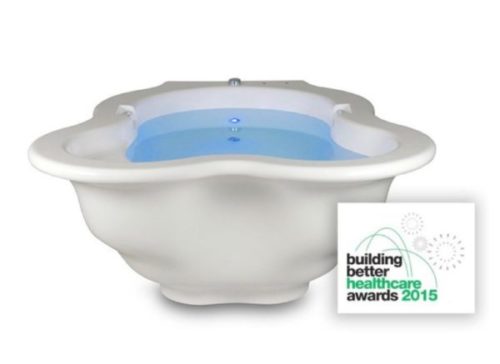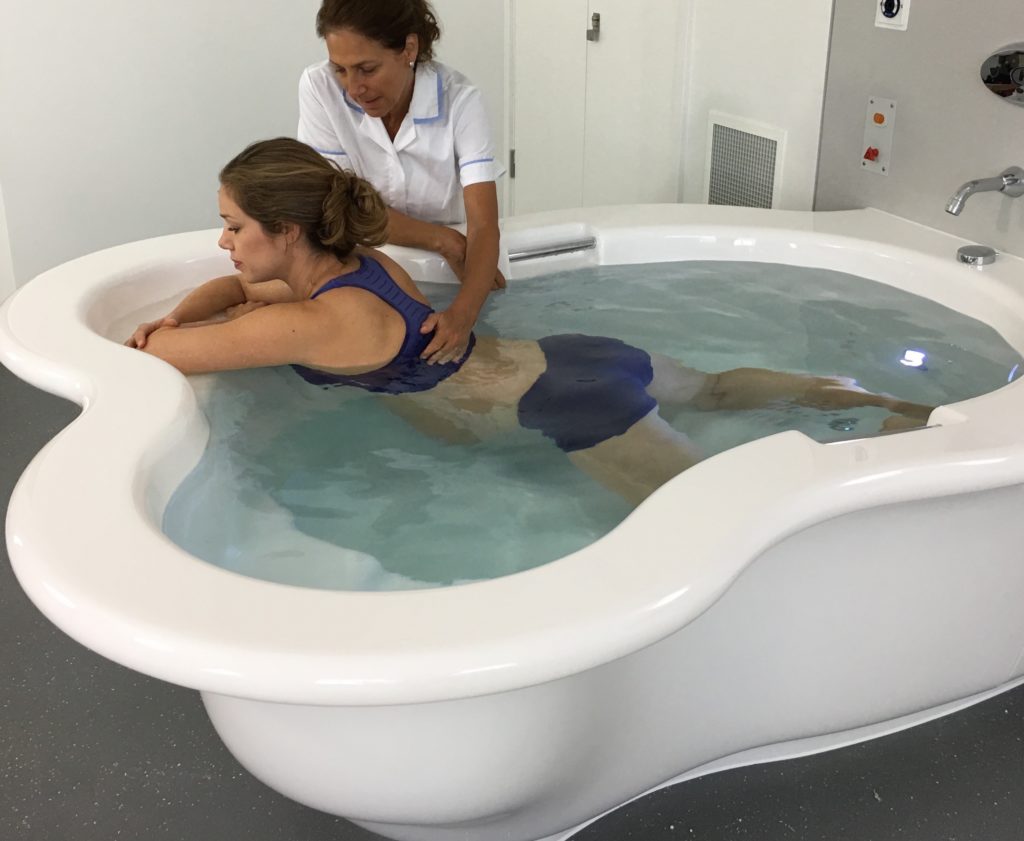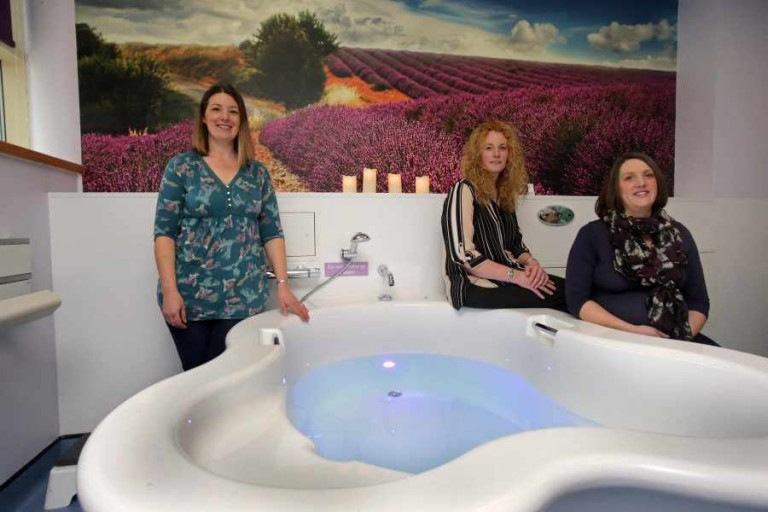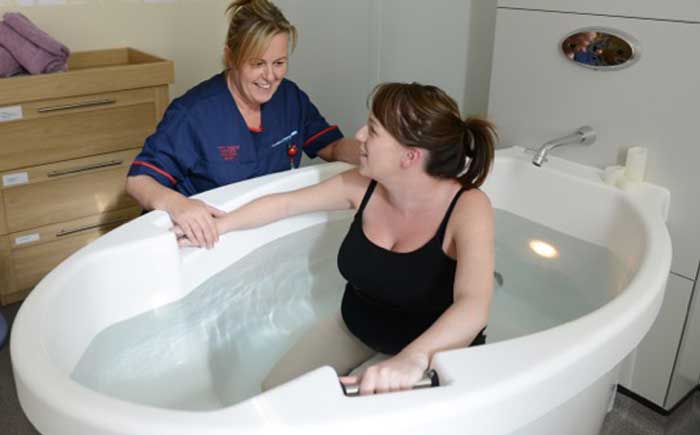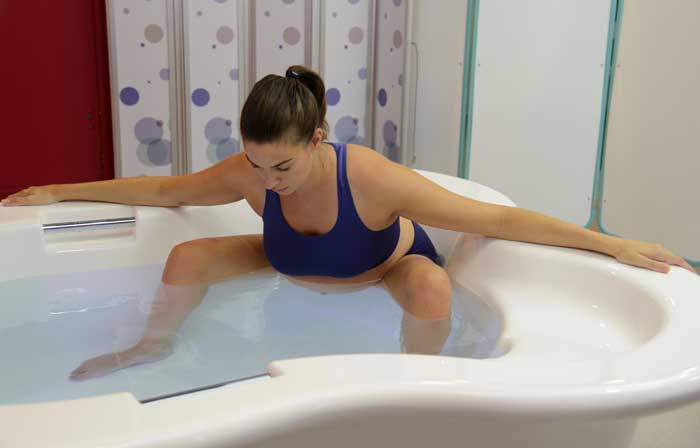Judy Slome Cohain
originally published December 2010
Abstract: A single case of early onset newborn Group B Strep was documented among 4,432 hospital births into water in the absence of GBS prophylaxis, suggesting that low risk women giving birth into water have a 300% lower rate of newborn GBS disease newborns than dry, full term births delivered by current GBS guidelines.
Possible explanations include:
1) Inoculating the baby with mother’s intestinal flora at birth protects against GBS infection;
2) Bath water washes off the GBS bacteria acquired during the descent through the vagina;
3) Pool dilutes the GBS among a multitude of other intestinal bacteria which compete with GBS;
4) Early onset GBS disease is prevented by lower level of interventions at water birth which promotes maternal and fetal immune function;
5) Kangaroo care after water birth promotes immune function of mother newborn dyad. Much is still to be learned from research documenting birth into water.
Group B Strep (GBS) inhabits the intestines.
Some minutes before the time of birth, the descending fetal head usually causes fecal matter to be excreted. If the woman is in water, the feces enters the water.
A bathtub can be quickly emptied before the fetal head is born.
If she is in a pool, the warm water is likely to be inoculated with GBS. Warm wet conditions enhance the reproduction of bacteria, increasing their numbers exponentially every few minutes.
If the baby’s is born into the warm, feces-exposed water, the baby is exposed to the mother’s intestinal bacteria.
Exposing the baby to the mother’s own natural flora is known to be one of many protective processes that are meant to take place immediately after birth.
Even so, birthing a baby into a feces soiled pool may be considered by many to be likely to increase the risk of newborn infection.
However, evidence of adverse outcomes is lacking.
A report of 4,030 births into water reports no deaths from early onset GBS and one GBS infection.
(1) Information is lacking as to whether the reported GBS-infected baby may also have had a chromosomal abnormality and/or increased blood loss from a snapped umbilical cord or shoulder dystocia.
When this study was conducted, the full term dry birth rate for GBS disease was six times higher (1 in 588) than the waterbirth GBS rate.
The current full term dry birth GBS rate is three times higher (1 in 1,450) than the reported waterbirth rate.(3)
The Cochrane review (2) includes three additional studies tallying another 402 women who birthed their babies into water for which no cases of newborn GBS infection occurred.
The full term waterbirth GBS rate is therefore, a fraction of the dry birth GBS infection rate even after implementation of the US Center for Disease Control (CDC) protocols.
The rate of early onset GBS disease among newborns born before 37 weeks gestation was 1 in 330(3).
Unfortunately research is lacking for whether this rate could also be lowered by birthing into water.
The 2010 CDC Guidelines (5) begins with the statement : “Maternal intrapartum GBS colonization is the primary risk factor for early-onset disease in infants.”
This statement is derived solely from data from interventive land birth, therefore making an incorrect assumption that all births take place in interventive hospital environments.
The evidence regarding GBS and waterbirth is missing from the CDC Guidelines. Objecting to the hospital waterbirth data on the basis of it not being randomized or a small sample is negated by the fact that there are no RCT trials supporting CDC Guidelines(4) and the largest samples included in the new CDC protocols are nonrandomized samples of 5,000 and 7,600 used to
1
support the low rate of anaphylaxis in women given prophylactic antibiotics. ( 5 )
The CDC(5) states definitively that “GBS also can invade through intact membranes (32,33)”.
The words ‘invade through intact membranes’ explicitly describes GBS making a hole rather than a blood borne mechanism.
This statement contradicts a later statement in the same protocols that early newborn GBS infection following elective CS in the presence of intact membranes is either completely or almost non-existant.
The only references supporting GBS ‘invading thru intact membranes’ are from 1984(6) and 1988(7) and do not refer to full term birth.
The first reports on 15 births less than 1000 g, before 28 weeks and all suffering from symptomatic intrauterine infections before birth.
The second reference states: “10-50% of group B streptococcal infections occur in the presence of intact membranes” which is a wild supposition not supported by any other research.
A mechanism is lacking for how GBS might have crossed both the amnion’s and chorion’s thick cross-linkages in the collagen triple helix that provide strength to the collagen.
The compact fibroblast layers of connective tissue beneath the basement membrane form a fibrous barrier. Interstitial collagens predominate and form parallel bundles of collagen fibrils that maintain the mechanical integrity of the amnion.
As an experienced practitioner knows, even with the aid of a sharp amniohook, it can be challenging to break thru two layers of healthy membranes without the presence of a bulging bag of water.
A close examination of CDC guidelines brings into question why certain dubious research is included and other research missing.
While birthing into water may appear counterintuitive, evidence strongly suggests that it protects babies from GBS disease.
Five possible mechanisms for how water birth may protect against GBS disease are suggested in the abstract.
While infusing women with high doses of IV antibiotics to suppress the GBS before the baby passes through, has been widely accepted as current protocol, the Cochrane review emphasizes the lack of RCT studies and the high risk of bias in the 3 small studies that exist. (4)
Routine antibiotic prophylaxis makes light of the biological adaptive abilities of bacteria.
Bacteria have developed many intriguing mechanisms like selectively pumping antibiotics out of their bodies and even digesting antibiotics for nutrition.(8)
The microorganism producing the antibiotic, must have a mechanism to keep itself unharmed by the antibiotic it produces.
Therefore, perfect antibiotic ‘resistance’, a euphemism for immunity, exists before the antibiotic is created.
GBS disease is increasing.
The overall incidence of early onset GBS disease of the newborn showed an initial downward trend from 2000 to 2003 (0.52 to 0.31 cases per 1,000 live births) followed by an increase from 2003 to 2006 (0.31 to 0.40 cases per 1,000 live birth.(9)
Not only is early onset GBS increasing but late onset GBS which is immune to prophylaxis is also increasing above previous levels (2003–2005).(9)
Finally, adult GBS has increased by 32% and it is predicted that this rate will continue to increase.(9)
Seven percent of adults are allergic to penicillin and therefore already have no effective treatment for the 20% of GBS that is erythromycin- and clindamycin- resistant(4).
In addition, a new disease that causes painful vaginal burning sensation without relief for years, called long-term symptomatic GBS vaginitis, first described in case studies in 1997, is now becoming more and more common and likely involves antibiotic resistant strains of GBS, since antibiotics are not consistently useful to eradicate it.(10)
Hospital Birth into Water data appears to provide the lowest Newborn GBS disease outcomes available without increasing the dangers of antibiotic resistance.
References:
1. Gilbert R.E. and P.A. Tookey. 1999. Perinatal mortality and morbidity among babies delivered in water: surveillance study and postal survey. BMJ 319: 483–87.
2. Cluett, E.R. and E. Burns. 2009. Immersion in water in labour and birth. Cochrane Database of Systematic Reviews (2) DOI: 10.1002/14651858.CD000111.pub3.
3. Phares C.R., et al. 2009. Epidemiology of invasive group B streptococcal disease in the United States, 1999-2005. JAMA 299(17): 2056–65.
4. Ohlsson A, Shah VS. Intrapartum antibiotics for known maternal Group B streptococcal colonization. Cochrane Databaseof Systematic Reviews 2009, Issue 3. Art. No.: CD007467.
5. Prevention of Perinatal Group B Streptococcal Disease. Revised Guidelines from CDC. 2010. November 19, 2010/59(RR10);1-32.
6. Desa DJ, Trevenen CL. Intrauterine infections with group B beta-haemolytic streptococci. Br J Obstet Gynaecol 1984;91:237–9.
7. Katz V, Bowes WA Jr. Perinatal group B streptococcal infections across intact amniotic membranes. J Reprod Med 1988;33:445–9.
8.http://www.scientificamerican.com/podcast/episode.cfm?id=166B51F8-DE9C-DCF8- 9132AF8A95CA0642 Accessed 1 Sept 2010.
9. Centers for Disease Control and Prevention. 2009. Trends in perinatal group B streptococcal disease — United States, 2000–2006. MMWR Morb Mortal Wkly Rep 58(5): 109–12.
10. Cohain, J.S. 2009. Long term Symptomatic GBS Vulvovaginitis — eight cases resolved with freshly cut garlic. Eur J Obstet Gynecol Reprod Biol 146(1): 110–11.





